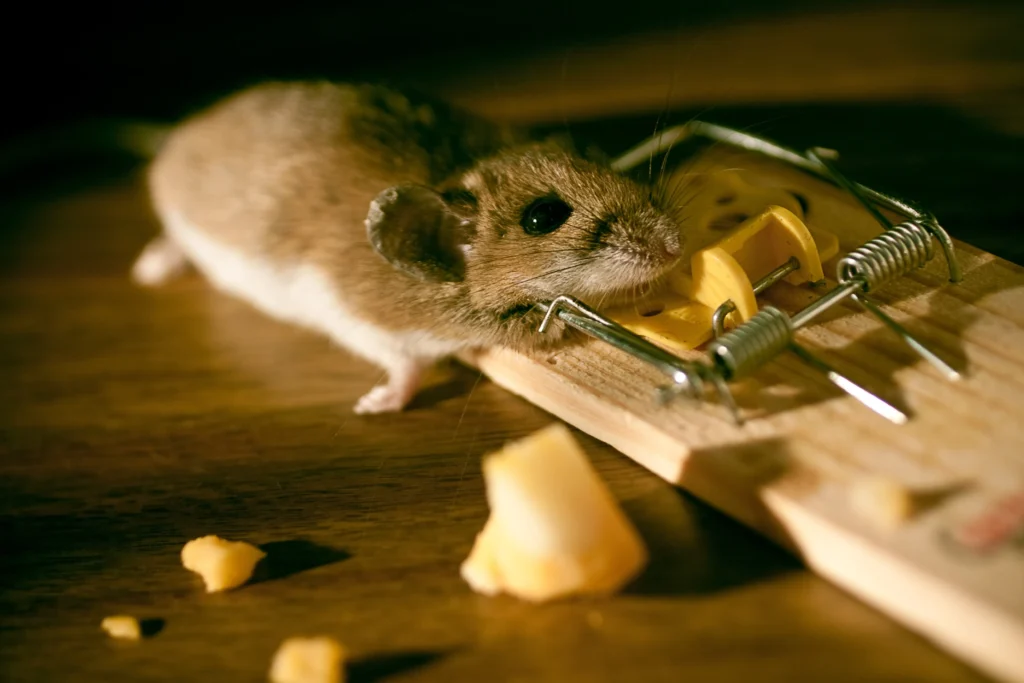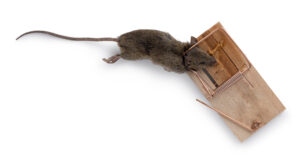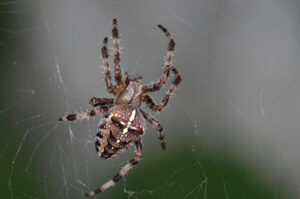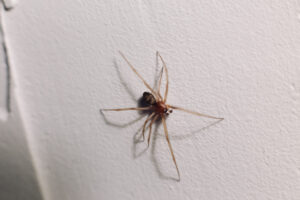Given its high elevation and varied topography, Colorado State experiences diverse weather that is characterized by distinct seasonal changes and significant variations.
From snow thawing in spring, raised summer temperatures, mild fall weather, and freezing points of the winter, each of these seasons presents Coloradans with a new set of pest menace.
Being cognizant of the prevailing seasonal changes is critical to recognizing the population’s behavior, which forms the basis of holistic prevention techniques and control measures.
Spring: Pests Awakening
The spring signals the end of winter, and the start of a warmer season, ushering Coloradans to a snow thaw and increased temperatures.

Dead Mouse Stock In A Mousetrap On The Floor
This awakens pests from dormancy and hiding, and they start nesting, as temperatures become favorable again. This in turn leads to increased critter populations that include ants, termites, spiders, and earwigs. Ants and termites migrate indoors in search of food, where they damage wood structures, thus weakening buildings. Spiders come looking for food while earwigs converge in damp areas such as basements and bathrooms.
Pest entry points such as cracks and spaces below the doors and around windows can be sealed with weatherstripping and caulk. Eliminating standing water around the yard and cleaning bushes can keep mosquitoes and spiders from your confines. Tightening leaky pipes and fixtures and maintaining dry basements and crawl spaces go a long way in deterring spiders and earwigs.
Summer: Peak pest Activity
New Jersey’s summer entails raised temperatures that provide optimum breeding conditions for the majority of local pests. The seasonal blooming of flowers and trees makes the situation even worse as pests thrive well in these thickets. The isolated summer showers, combined with the warm season weather support the breeding of most New Jersey pests including houseflies, bees, mosquitoes, wasps, rodents, and bird fleas. To eliminate these, consider trimming yard plants, flowers, and trees. Placing bird feeders, bat boxes, and beehives can help deter rodents, birds, among other critters from migrating indoors in search of food and water. Draining still water from the yard is also crucial for the eradication of flies and mosquitoes.
Fall: Preparing for Winter Shelter
The onset of fall comes with low temperatures, which usher yet another cold season. The diminished fall temperatures lead to the beginning of pests’ influx indoors as they seek warmth and food. Rodents such as mice and rats seek warmth and shelter in basements, attics, and garages. Spiders migrate indoors in search of shelter and food while stink bugs are attracted to warm areas around windows. To combat this amplified migration, homeowners are advised to seal gasps by replacing weatherstripping on windowsills and doors. Replacing bright exterior lights with yellow or sodium vapor bulbs can help deter insect migration indoors. Foundation and roofline inspection including patching up holes and cracks with cement and silicone goes a long way in keeping critters off your confines. Firewood should be stored elevated and at least 20 feet away from the house to combat pest nesting in the file.
Winter: Rodents and Indoor Pests
The onset of continued temperature drop signals the start of snowfall, leading to more pest migration indoors. The consequence of this is significant property damage coupled with health hazards.
Rodents including rats and mice gnaw through insulation, wires, and walls, culminating in fire risks. Cockroaches seek shelter in kitchens and bathrooms, spreading disease-causing bacteria. Control of rodent populations becomes easier with traps and bait installation along entry points, under sinks, in garages, and near doorways. Use of airtight containers to store dry and pet foods and cleaning up crumbs and spills promptly is among the various ways of controlling insects. Periodic attic and basement inspections and removal of clutter buildup are other hacks for pest eradication. Of significant importance to pest management around homes, is waste management which entails taking out trash regularly, and cleaning bins to prevent attracting pests like cockroaches.
General Tips for All Seasons
The following are the guidelines for maintaining pes-free homes in Colorado. Maintaining a regular cleaning schedule minimizes attractants like food crumbs and standing water. Keeping garbage in tightly sealed bins and avoiding letting it pile up is a responsible trash management hack in pest control.
By staying proactive and adjusting your pest control strategies seasonally, you can combat infestations before they escalate to serious problems. Colorado’s varied climate means different pests pose threats at different times of the year, so consistent pest prevention will protect your home year-round. For persistent issues or specialized needs, professional pest control strategies can offer ongoing protection and advice.




